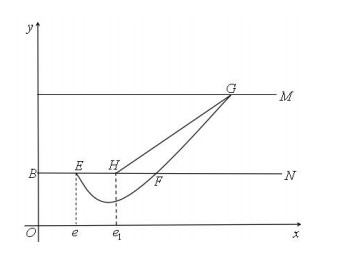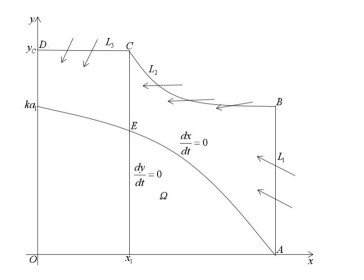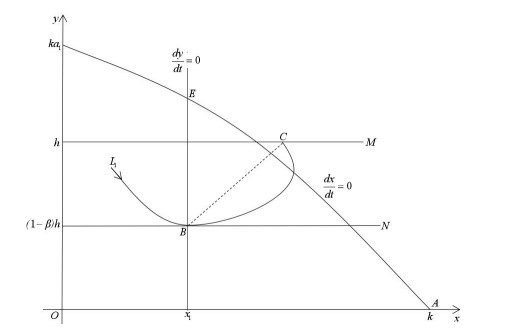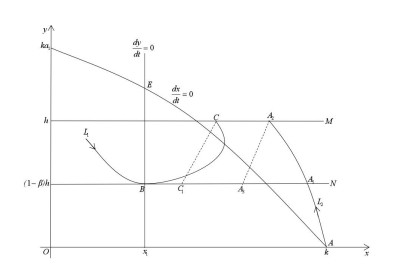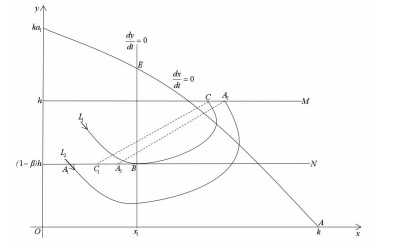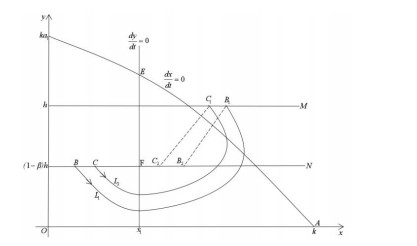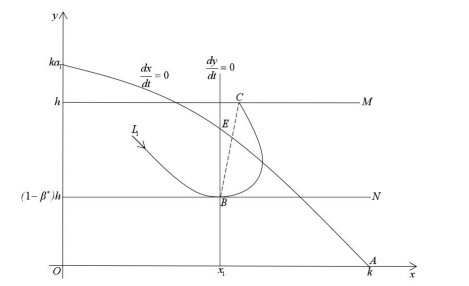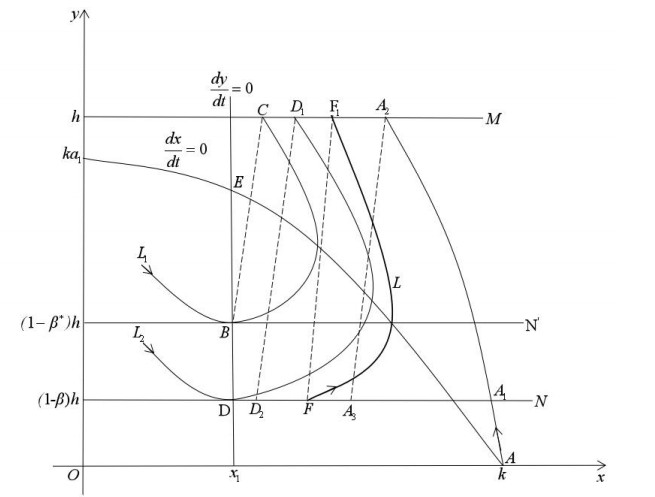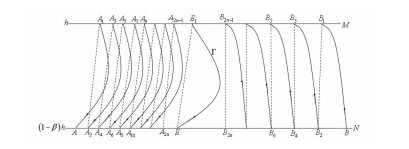1.
Introduction
At the beginning of the 21st century, due to a stronger resistance of pests against pesticides, drugless biologic pest management became increasingly significant for agriculture. Generally, pests damage three parts of plants: the top layer, middle layer and roots. Pest management currently focuses more on the upper and middle parts of plants, yet less attention has been given to plant roots. In addition, the soil around plant roots is full of abundant beneficial microbes, and these microbes are vital for the growth of crops. However, there are also pests consuming these beneficial microbes, and more beneficial microbes are consumed once the number of pests increases, thus causing a reduction in grain yields. To eliminate pests, using chemicals, e.g., pesticides, was once an effective method that was largely used previously, but pesticides kill beneficial microbes in the soil as well, and it may result in serious pollution in the soil [1].
Pest control is a complex question that has always been a research object of ecologists and mathematicians. To better maintain the ecological security of crops, pesticides are less considered for pest management as long as the harm of insect pests to crops can remain within an appropriate range. Once the pest number reaches a threshold value (also known as the economic threshold (EI), artificial intervention will be applied, spraying pesticides to kill pests [2,3,4]. Since the theory of semi-continuous dynamic systems was proposed and applied to pest control [5], it has received attention from relevant scholars [6,7,8,9,10,11,12,13,14,15,16,17,18]. Achievements in the management of plant root pests are few at present, only see [19], which considers the following state feedback control model of plant root pest management
where x(t) and y(t) represent the density of microorganisms and pests in soil at time t, respectively. r>0 is the growth rate, ω>0 is the growth coefficient of microbial population density under an unsaturated state; α and α1 are positive numbers. β>0 stands for the mortality of pests. 0<a<1 is the rate of microorganisms killed by the pesticide; and 0<b<1 is the rate of pests killed by the pesticide. y∗ indicates the critical value of the pest population. In this paper, the conditions for the existence and orbital asymptotic stability of the one-periodic solution of the model (1.1) are obtained. To better protect the beneficial microorganisms in the plant root soil, it is necessary to eliminate pests to the maximum extent possible while reducing soil pollution and promoting the growth of crops. Therefore, considering that the living environment of beneficial microbial populations in the soil has been destroyed to varying degrees. In general, it follows a non-linear growth rate g(x)=a−bxα−cx2α[20], where a> is the growth rate and α>0 is a positive number. In [21], cheng et al also considered that the relative growth rate of prey population g(x) is nonlinear, that is, g(x)=a−bxm for a>0,b>0 and 0<m<1. Inspired by [20,21], this paper considers that the growth rate of beneficial microorganisms in soil is nonlinear, that is, g(x)=r(1−√xk), see (1.2) for the biological significance represented by its specific parameters. Therefore, encouraged by [19,20,21], in view of the problem of plant root pest management, this paper proposes the following plant root pest management model.
where x(t) and y(t) are the density of beneficial microorganisms in the soil and the density of pests in the soil, respectively; r is the growth rate; k represents the capacity of beneficial microorganisms in the natural environment; m is the unsaturated coefficient; w is the growth coefficient of microbial population density under an unsaturated state; b is the predation rate of pest populations on microbial populations; a represents the natural mortality of pest populations; c is the number of newly born pests; bxm+wx represents the function of pest predation on microorganisms; h indicates the critical value of the pest population; 0<α<1 is the rate of microorganisms killed by the pesticide; and 0<β<1 is the rate of pests killed by the pesticide, all parameters of model (1.2) are positive numbers according to the actual meaning of parameters representing biology. However, readers want to know more about the theory and application of the existence of periodic solutions to nonlinear differential equations, here are some good references for readers [22,23,24] and references therein. For mathematical simplicity, we non-dimensionalize the system (1.2) with the following scaling
and then system (1.2) becomes the form
where a1=mw>0, a2=2akmrw>0, and a3=2k(cb−aw)rw, and to ensure the existence of the equilibria of model (1.3), we supposed cb−aw>0, then a3>0. As long as the population behaviour in model (1.3) is understood, the population behaviour in model (1.2) is then clear. According to the actual biological significance of the population, this paper discusses the population behaviour in model (1.3) is limited to the region R2+={(x,y)|x≥0,y≥0}.
This paper is organized as follows. In the next section, we give some preliminary results. In Section 3, we discuss the properties of the continuous dynamics of the system (1.3). Section 4 is devoted to the study of existence and stability of order 1 periodic solutions for system (1.3). We give a brief conclusion in Section 5.
2.
Preliminary results
In this section, we first give some definitions and lemmas for the later proofs.
Definition 2.1. [5,25] Considers the following state impulse differential equations
The solution mapping of system (2.1) is called as the semi-continuous dynamical system. Marked as (Ω,f,φ,M). We specify that the initial point p of the mapping system cannot be on the impulse set. p∈Ω=R2+−M{x,y}, φ is continuously mapped. φ(M)=N, here M{x,y} and N{x,y} are the straight line or curve on a plane. R2+={(x,y)∈R2:x≥0,y≥0}, M{x,y} is pulse sets, N{x,y} is a phase set.
Definition 2.2. [5,25] If in phase set N, ∃p∈N and ∃T1, satisfy that f(p,T1)=q1∈M{x,y}, and the impulse map φ(q1)=φ(f(p,T1))=p∈N{x,y}, then f(p,T1) is called the periodic solution of order one. Its phase is marked as T1 and is shown in Figure 1.
Definition 2.3. [5,25] In pulse system (1.3), supposes that M={(x,y)∈R2+∣y=h,x≥0} is a pulse set, and φ is marked as the pulse function. It is specifically φ:(x,h)∈M→((1−α)x,(1−β)h)∈R2+, the phase set is N=φ(M)={(x,y)∈R2+∣x≥0, y=(1−β)h}, and M and N are both straight lines, as shown in Figure 2. Suppose that B is the intersection point of the phase set N and axis y, and e is the distance from point E to point B in phase set N. A trajectory starts from point B of set E and intersects with the pulse set at point G. After pulse mapping, point G has its phase point H at phase set N, and the distance is e1. H is defined as the successor point of point E, and the successor function of point E is G(E)=e1−e.
Lemma 2.1. [5,25] Successor function G(E) is continuous.
Lemma 2.2. [5,25] Supposes continuous dynamic (X,Π), if there are two points A and B in the phase set N such that G(A)⋅F(B)<0, then there must exist a point E∈N between A and B such that G(E)=0.
Lemma 2.3. [5,25] As a sufficient and necessary condition for G(B)=0 is that the trajectory through point B is a periodic solution of order 1 of system (1.3).
Lemma 2.4. [26] upposes the T−periodic solution of the system below x=ψ(t),y=ϕ(t) is asymptotically stable
If multiplier μ2 satisfies |μ2|<1, where
and P, Q, ∂α1∂x, ∂α1∂y, ∂β1∂x, ∂β1∂y, ∂Φ∂x, ∂Φ∂y have solution q in point (ψ(τk),ϕ(τk)), P+=P(ψ(τ+k),ϕ(τ+k)), Q+=Q(ψ(τ+k),ϕ(τ+k)).
3.
Analysis of continuous system dynamic behaviour
When α=β=0, system (1.3) can be transformed to the continuous dynamic system function below
Its equilibria are O(0,0) and A(k,0). when x<k, there is also a unique positive equilibrium point E(x1,y1) that can be obtained, and x1=√a2a3, y1=(k−x1)(x21+a1), thus 0<x1<k. Next, we analyze the stability of the equilibrium point. Assuming that P(x,y)≜x(k−x)(x2+a1)−xy, Q(x,y)≜y(−a2+a3x2), thus ∂P∂x=(k−2x)(x2+a1)+2x2(k−x)−y, ∂P∂y=−x, ∂Q∂x=2a3xy, ∂Q∂y=−a2+a3x2.
Lemma 3.1. When k2<3a1, system (1.3) has no limit cycle in R2+={(x,y)|x≥0,y≥0}.
Proof. Supposing Dulac function B(x,y)=1xy, then
Thus we obtain ∂(BP)∂x+∂(BQ)∂y=−1y(3x2−2kx+a1)<0. when k2<3a1, system (1.3) has no limit cycle in R2+={(x,y)|x≥0,y≥0}. The proof is completed.
Lemma 3.2. System (1.3) is all bounded with the positive half trajectory in R2+={(x,y)|x≥0,y≥0}.
Proof. Assuming a straight line L1=x−k=0 through point A(k,0), then for system (1.3), there is dL1dt|L1=0=−ky<0, when trajectory meet line L1, it passes through the line from right to left, as shown in Figure 3. Then, we assumed that a curve L2=lny+x−M=0 intersected isoclinic line dydt=0 at point C and intersected straight line L1 at point B(k,yB), yB>y1. When x1≤x≤k, supposing f(x)=−a2+a3x2+x(k−x)(x2+a1)>0, as long as M is sufficiently large, then dL2dt∣L2=0=f(x)−xeM−x<0, when trajectory meets curve L2, it all passes through the curve from up to down. In addition, drawing a line L3=y−yC=0 through point C of the curve, line L3 intersects with the y−axis at point D. When 0<x<x1, dL3dt∣L3=0=yC(−a2+a3x2)<0, and when trajectory meets line L3, it passes the line from top to bottom. Lines x=0 and y=0 are both the trajectory of system (1.3). Since the boundary equilibria O(0,0) and A(k,0) are saddle points, the x−axis, y−axis, line L1, line L2, and line L3 surround domain Ω and construct its outer boundary, as shown in Figure 3. The positive half trajectory of system (1.3) in R2+={(x,y)|x≥0,y≥0} finally pass into domain Ω. Then we complete the proof.
Lemma 3.3. (i) Equilibria O(0,0) and A(k,0) are saddle points. (ii) When k2<3a1, the unique positive equilibrium point E(x1,y1) is stable, and it is locally asymptotically stable.
Proof. (ⅰ) can be simply obtained. Therefore, only (ⅱ) needs to be verified. For E(x1,y1), the characteristic root at equilibria is
Thus, the characteristic function λ2+m1λ+m2=0, where m1=x1(3x21−2kx1+a1)=x1g(x1), g(x1)=3x21−2kx1+a1, m2=2a3x21y1>0, When k2<3a1, g(x1)=0 has no real root for x1. If g(x1)>0, then m1>0. It is easy to know that all eigenvalues have negative real parts. Therefore, the unique positive equilibrium point is locally asymptotically stable. The proof is ended.
The following conclusions can be drawn from Lemma 3.1–3.3.
Theorem 3.1. When k2<3a1, the unique positive equilibria E(x1,y1) of system (1.3) are globally asymptotically stable on R2+.
4.
Existence and stability of order 1 periodic solutions for system (1.3)
When k2<3a1, system (1.3) has its unique positive equilibria E(x1,y1), which is also globally asymptotically stable on R2+, considering the existence of order 1 periodic solutions of this system. In pulse system (1.3), supposing M={(x,y)∈R2+|y=h, x≥0} to be a pulse set, then φ is a pulse function, specifically, φ:(x,h)∈M→((1−α)x,(1−β)h)∈R2+. N=φ(M)={(x,y)|x≥0, y=(1−β)h} is the phase set. Based on the relationship of the phase set, pulse set and equilibria, this paper mainly discusses the existence and stability of order 1 periodic solutions in both situations, i.e., 0<(1−β)h<y1<h and 0<(1−β)h<h<y1.
4.1. Existence and stability of order 1 periodic solutions of system (1.3) for 0<(1−β)h<h<y1
Theorem 4.1. When k2<3a1 and ∀α∗,α∈(0,1), regardless of the changes in α∗,α, system (1.3) has a unique order 1 periodic solution.
Proof. To verify Theorem 4.1, 3 conditions need to be considered regarding the different values of α∗,α.
Case Ⅰ: When 0<α=α∗<1, supposing phase set N has intersection point B(x1,(1−β)h) with isoclinic line dydt=0. Therefore, there must be a trajectory L1 tangent with phase set at point B, and trajectory L1 also intersects with pulse set M at a point, marked as C(xC,h). Pulse function φ(x,α)=(1−α)x is a monotonic function, monotonically increased by x and monotonically decreased by α. According to the direction of trajectory, when xC>x1, there must be α∗∈(0,1), making φ(xC,α∗)=(1−α∗)xC=xB. In other words, the phase point of C after impulse is exactly point B. Therefore, the subsequent function of B becomes G(B)=0. Based on Lemma 2.3, system (1.3) has an order 1 periodic solution when 0<α=α∗<1, as shown below in Figure 4.
Case Ⅱ: When 0<α<α∗<1, supposing phase set N intersects with isoclinic line dydt=0 at point B(x1,(1−β)h), then there must be a trajectory L1 tangent with phase set at point B, and trajectory L1 also intersects with pulse set M at a point, marked as C(xC,h). Pulse function φ(x,α)=(1−α)x is a monotonic function, monotonically increased by x and monotonically decreased by α. φ(xC,α∗)=(1−α∗)xC=xB, φ(xC,α)=(1−α)xC=xC1. Thus, xC1>xB, and the subsequent function of B is G(B)=xC1−xB>0. Because point A is the saddle point, there is necessarily but only one separatrix L2 across point A1 in the phase set. After impulse action occurs, the phase point of phase set N is A3. By analysing the direction of trajectory, if (1−α)xA2<xA2<xA1, then (1−α)xA2=xA3<xA1, and the subsequent function of A1 goes to G(A1)=xA3−xA1<0. According to Lemma 2.2, there must be a point between B and A1 in phase set N, marked as point F, and its subsequent function is G(F)=0. Based on Lemma 2.3, when 0<α<α∗<1, system (1.3) has an order 1 periodic solution, as shown below in Figure 5.
Case Ⅲ: When 0<α∗<α<1, supposing phase set N intersects with isoclinic line dydt=0 at point B(x1,(1−β)h), then there must be a trajectory L1 tangent with phase set at point B, and trajectory L1 also intersects with pulse set M at a point, marked as C(xC,h). Pulse function φ(x,α)=(1−α)x is a monotonic function, monotonically increased by x and monotonically decreased by α. φ(xC,α∗)=(1−α∗)xC=xB, φ(xC,α)=(1−α)xC=xC1. Thus, xC1<xB, and the subsequent function of B is G(B)=xC1−xB<0. Drawing a line L2 across phase set N and pulse set M at points A1 and A2, respectively, after impulse action occurs, the phase point of phase set N is A3. According to the direction of the trajectory and disjunction of the trajectory, xc<xA2. In addition, by φ(x,α)=(1−α)x, gained (1−α)xC=xC1<(1−α)xA2=xA3. Hence, point A3 is on the right side of C1, and the subsequent function is G(A1)=xA3−xA1>0. According to Lemma 2.2, there must be a point between B and A1 in phase set N, marked as point F, and its subsequent function is G(F)=0. Based on Lemma 2.3, when 0<α∗<α<1, system (1.3) has on order 1 periodic solution, as shown below in Figure 6.
The uniqueness of order 1 periodic solutions of system (1.3) is discussed as follows.
Assuming two points B and C in phased set N, suppose that xB<xC<xF. Thus, there must be a trajectory L1 across to point B, intersecting the point B1 at the pulse set. After impulse action, the phase point in the phase set is B2, which is also the subsequent point of B. Furthermore, there must be another trajectory L2 across point C at the phase set, intersecting C1 at the pulse set. After impulse action, the phase point in the phase set is C2, which is also the subsequent point of C. Due to the direction and disjointedness of the trajectory, there must be xC1<xB1, and because function φ(x,α)=(1−α)x is monotone, φ(xC1,α)=(1−α)xC1=xC2, φ(xB1,α)=(1−α)xB1=xB2, so xB2>xC2 for the subsequent functions G(B) and G(C), G(C)−G(B)=(xC2−xC)−(xB2−xB)=(xC2−xB2)−(xC−xB)<0, which indicates that subsequent functions are monotonically decreasing in phase set N. With the above analysis, understanding that there must be a point H in phase set N that satisfies G(H)=0, the uniqueness can be verified, as shown in Figure 7. On the whole, when k2<3a1, α∗,α∈(0,1), disregarding how the parameters of α∗,α change, system (1.3) has its unique order 1 periodic solution.
The proof is ended.
Theorem 4.2. When k2<3a1 and −2<a3ψ20(α2−2α)−a2+a3ψ20<0, the trajectory Γ across point (ψ0,h) for order 1 periodic solution of system (1.3) is asymptotically stable.
Proof.
thus, we can obtain
where
where k2<3a1, 3ψ2(t)−2kψ(t)+a1>0, exp{−∫T0ψ(t)(3ψ2(t)−2kψ(t)+a1)dt}≤1. Bringing Δ1 into μ2, then, we have
When k2<3a1 and −2<a3ψ20(α2−2α)−a2+a3ψ20<0, there is |μ2|<1, according to Lemma 2.4, the trajectory Γ across point (ψ0,h) for order 1 periodic solution of system (1.3) is asymptotically stable. The proof is completed.
4.2. Existence and stability of order 1 periodic solutions of system (1.3) for 0<(1−β)h<y1<h
Theorem 4.3. When k2<3a1 and ∀β∗,β∈(0,1), , whatever the β∗,β change.
(i) If 0<β=β∗<1, then system (1.3) has an order 1 periodic solution;
(ii) If 0<β<β∗<1, then the trajectory of system (1.3) is going to E(x1,y1);
(iii) If 0<β∗<β<1, then system (1.3) has an order 1 periodic solution.
Proof. (i) If 0<β=β∗<1, see Figure 8. For system (1.3), drawing a trajectory L1 through isoclinic line dydt=0 and letting it be tangent to phase set N at point B(xB,yB). Point B is the intersection of isoclinic line dydt=0, trajectory L1 and phase set. Trajectory L1 intersects with pulse set M at point C. Due to pulse function yB=φ(β,h)=(1−β)h, xB=φ(xC,α)=(1−α)xC. If h is fixed, yB is a decreasing function. Thus, the location of xB depends on the location of yB. Therefore, β∗,α∗∈(0,1) satisfies yB=(1−β∗)h and xB=(1−α∗)xC. When trajectory L1 reaches point C in pulse set M, impulse action occurs, and point B is exactly the subsequent point. Therefore, if 0<β=β∗<1, trajectory L1 constructs an order 1 periodic solution for system (1.3) with ^BC and ^CB, i.e., according to Lemma 2.3, there must be G(B)=0.
(ii) when 0<β<β∗<1, straight line y=(1−β)h is located above line y=(1−β∗)h, as shown in Figure 9. The trajectory (e.g., L2) starting from the initial value is probably both intersected and non-intersected with line y=(1−β)h. If trajectory L2 does not intersect with y=(1−β)h, no impulse occurs. However, because the positive E(x1,y1) equilibria have globally asymptotic stability, the trajectory tends to further approach positive equilibria E(x1,y1). If the trajectory intersects with line y=(1−β)h and the interaction is point F, after impulse, it turns back to phase set N. Finally, after several impulses, the trajectory must enter the left side of other trajectories (e.g., L1) because the positive equilibria E(x1,y1) are globally asymptotic stable, and finally, the trajectory tends to positive equilibria E(x1,y1). Therefore, when 0<β<β∗<1, the trajectory of system (1.3) is going to E(x1,y1).
(iii) If 0<β∗<β<1, see Figure 10. Straight line y=(1−β)h is located below line y=(1−β∗)h, and it indicates that if β=β∗, an order 1 periodic solution for system (1.3) exists. Drawing a trajectory L2 under L1 across the intersection point D of phase set N and isoclinic line dydt=0, it intersects with pulse set M at point D1, based on direction and disjointedness of the trajectory, point D1 must be at the right side of point C. After impulse action, it reaches to point D2 at phase set. Here D2 is the subsequent point of D. Considering the pulse function φ(x,α)=(1−α)x and the direction of trajectory, point D2 must be at the right side of D. Therefore, the subsequent function of D is G(D)=xD2−xD>0. Drawing a trajectory L3, intersected phase set N at point A1 and intersected pulse set M at point A2, after impulse action, the trajectory L3 reaches the point A3 at phase set N, and A3 is the subsequent point of A1. According to the direction and trend of trajectory, point A3 must be on the left side of A1. Therefore xA3<xA1, and the subsequent function G(A1)=xA3−xA1<0. According to Lemma 2.2, there must be a point F between point D and A1, which makes subsequent function G(F)=0. In addition, by Lemma 2.3, when 0<β∗<β<1, an order 1 periodic solution for system (1.3) exists. The proof is thereby complete.
Theorem 4.4. When k2<3a1 and 0<β∗≤β<1, an order 1 periodic solution for system (1.3) exists, the order 1 periodic solution is unique and its trajectory is asymptotically stable.
Proof. First, uniqueness is verified as follows, as shown in Figure 11. Furthermore, based on the analysis above, the trajectory passes through point A in the phase set and intersects with pulse set M at A1. After impulse mapping of A1, it is mapped to the phase set at point A2. Clearly, the subsequent point of A is A2. In addition, the trajectory, which starts from A2, passes through point A3 at the pulse set. After the same process, it is mapped to the phase set at A4. Therefore, A4 is the subsequent point of A2. Reasoning this with the same procedures, two sequences can be obtained as follows
Likewise, the other two can be obtained if assuming the trajectory starts from point B
The sequences {A2n−1} and {A2n} monotonically increase; in contrast, {B2n−1} and {B2n} monotonically decrease. According to Figure 11, ¯A1B1 maps to ¯AB. Hence, (xA2n−1,xB2n−1)⊂(xA2n,xB2n). Thus, limn→∞d(xA2n,xB2n)=0, and limn→∞xA2n=xE=limn→∞xB2n, where system (1.3) has an order 1 periodic solution.
secondly, we verify the trajectory stability of the order 1 periodic solution. Drawing two random points F0,H0 infinite near E. These two points satisfy xA<xF0<xE<xH0<xB, as shown in Figure 12. There is a positive integer i, allowing xA2i<xF0<xA2i+2<<xE<xB2i+2<xH0<xB2i.
The trajectory that starts from F0 intersects point F1 of pulse set M. After impulse, the phase point turns to F2. Because of the disjointedness of the trajectory, point F2 is located between A2i+2 and A2i+4. By the monotonicity of sequence {xA2n}, thus xA2i+2<F2<xA2i+4. Similarly, the subsequent point of F2 is F4, and xA2i+4<F4<xA2i+6. By applying the same processes above, a new sequence {F2k} can be obtained, i.e., {F2k}⊂¯AB, k=0,1,2,⋯, which also satisfies the requirements below.
(I) F2k is located between A2i+2k and A2i+2k+2.
(II) xA2i+2k<xF2k<xA2i+2k+2.
In addition, the trajectory that starts from H0 intersects point H1 of pulse set M. After impulse, the phase point turns to H2. Because of the disjointedness of the trajectory, point H2 is located between B2i+2 and B2i+4. By the monotonicity of sequence {xA2n}, thus xB2i+2<H2<xB2i+4. Similarly, the subsequent point of H2 is H4, and xB2i+4<H4<xB2i+6. By applying the same processes above, a new sequence {H2k} can be obtained, i.e., {H2k}⊂¯AB, k=0,1,2,⋯, which also satisfies the requirements below.
(a) H2k is located between B2i+2k and B2i+2k+2.
(b) xB2i+2k<xH2k<xB2i+2k+2.
So, we have limk→∞xF2k=limk→∞xA2i+2k=limk→∞xH2k=limk→∞xB2i+2k=xE, due to the arbitrariness of F0,H0, when k2<3a1 and 0<β∗≤β<1, the trajectory of the order 1 periodic solution for system (1.3) is asymptotically stable. This completes the proof.
4.3. Discussion
If the unique positive equilibrium is globally asymptotically stable, that means the two populations remain dynamically stable for a considerably long period and will not become extinct due to slight changes in the environment or man-made changes in the environment. The existence of an order 1 periodic solution for the two populations means that the two populations maintain periodic stability. However, in a certain period, if a sudden growth of one group occurs, it has in fact a huge impact to the growth of another, leading the growth of species deviates from the stable periodic orbit. While, according to the situation observed, we can implement the state pulse control on the increasing species at this moment, so that the growth of two species can return to the stable periodic orbit. Due to the uniqueness of the periodic orbit, an implement pulse behavior on the population is necessary. The point is to implement pulse behavior when the population deviates too far from the orbit within a fixed period, to make the population return to a stable period and maintain a dynamic balance among the populations. In addition, as certain parameter conditions are satisfied, there is a unique asymptotic stability of periodic orbit, which means that the dynamic stability between populations can be maintained for a long time, it is also beneficial to remain growth of two species steady.
5.
Conclusions
In this paper, a mathematical model of pest control based on plant roots was systematically studied. First, the existence and stability of system equilibria under an impulse-free state were analysed. Furthermore, considering that positive equilibria of the system exist, a sufficient condition for the existence of order 1 periodic solutions was obtained by controlling the impulse parameters α,β. Finally, by applying theorems (e.g., geometric theory of differential equations, successive function method, interval set theorem in mathematical analysis, and squeeze criterion), this study gained that the system has a unique order 1 periodic solution Γ when several conditions are satisfied, and the trajectory of this order 1 periodic solution Γ is asymptotically stable. By analysing the model with the theory of semi-continuous dynamic systems, the condition of a stabilizing order 1 periodic solution can be obtained. Furthermore, in real practice, a pulse control strategy can be implemented regarding the model and number of pests, i.e., only when the number of pests exceeds the threshold value are artificial means needed to control pests. This is not only to keep pests at an appropriate amount but is also beneficial to maintain the balance of the ecochain.
Acknowledgments
The authors would like to thank the anonymous referees and the editor for very helpful suggestions and comments which led to improvements of our original paper. Research partially supported by the Guangxi Natural Science Foundation under Grant (No. 2016GXNSFAA380102), Innovation Project of Guangxi Graduate Education (No. JGY2019174), and Guangxi Young and middle-aged Teachers Basic Ability Improvement Project (No. 2022KY0428).
Conflict of interest
All the authors affirmed that they have no conflicts of interest.
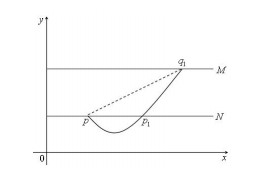









 DownLoad:
DownLoad:
